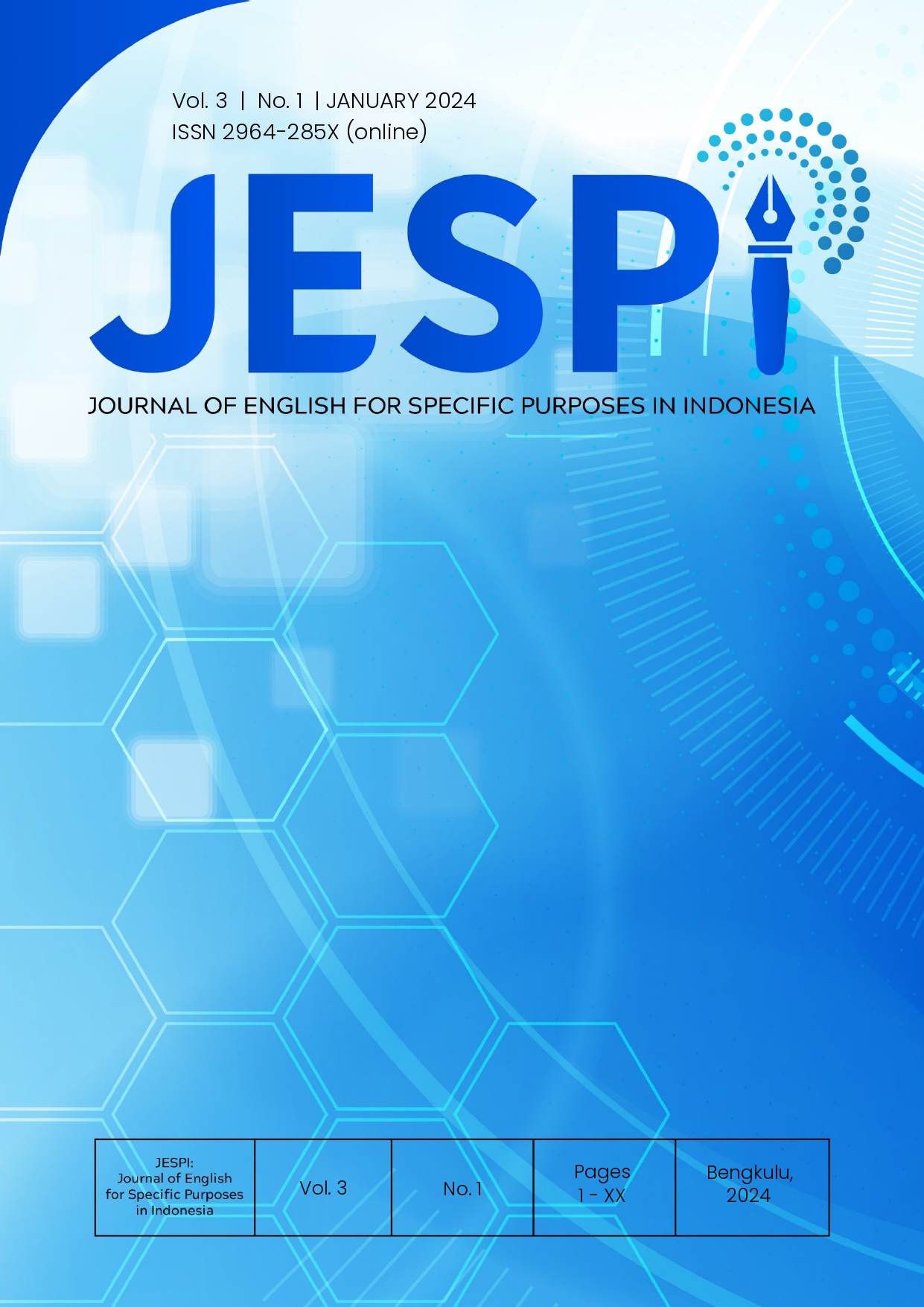Main Article Content
Abstract
Figurative language is language that uses figures of speech rather than literal meaning and is frequently used in literature to give vitality and interest to the author’s writing. The purpose of this study is to identify the type of figurative language used in the lyric ‘Drive You Home’ and to analyze the connotative and contextual meaning of figurative language in that song lyric. The descriptive qualitative method is used in this study. The result of this study found that there is some figurative language used in Jackson Wang’s song entitled ‘Drive You Home’, such as simile, metaphor, allegory, hyperbole, and symbol. The connotative and contextual meaning of each figurative language is also clarified.
Keywords
Article Details
Copyright (c) 2024 Sureena Sa-ae

This work is licensed under a Creative Commons Attribution-ShareAlike 4.0 International License.

Ciptaan disebarluaskan di bawah Lisensi Creative Commons Atribusi-BerbagiSerupa 4.0 Internasional.
References
- Abrams, M. H. (1999). A glossary of literary term seventh edition. Retrieved from: http://www.Ohio.edu/people/Hartley/ref/abrams_mh.pdf.
- Arp, Thomas R. and Greg Johnson. (2011). Perrine's sound and sense: An introduction to poetry.13th Ed.USA: Wadsworth Cengage Learning.
- Jackson, V. & Prins, Y. (2014). The Lyric Theory Reader A Critical Anthology. Baltimore. Johns Hopkins University Press.
- Grover, Julie. (1994). English literature. UK: Longman Group Uk Limited.
- Kennedy, X.J., & Gioia, D. (2007). An Introduction to Poetry (12th ed.). NY: Pearson.
- Ladika, A. R. (2018). The Analysis of Figurative Language Used by Dr. Zakinthos Naik. [Online]. Available:https://repository.unja.ac.id/3251/1/[Article] THE ANALYSIS OF FIGURATIVE LANGUAGE USED BY DR.ZAKIR NAIK_ ARL.pdf [Access from the internet on December 20, 2022
- Pridbadi, V. D. (2019). An Analysis of Figurative Language in the Selected Songs Album of Jessie J. REPOSITORY STKIP PGRI SIDOARJO. https://repository.stkippgri-sidoarjo.ac.id/770/
- Sopiansyah, I. & Inayah, R. (2021). The Analysis of Figurative Language in “Girl on Fire” Song Lyrics By Alicia Keys. PROJECT: Professional Journal of English Education, 4(2), 208-215. DOI:10.22460/project.v4i2.p208-215.
References
Abrams, M. H. (1999). A glossary of literary term seventh edition. Retrieved from: http://www.Ohio.edu/people/Hartley/ref/abrams_mh.pdf.
Arp, Thomas R. and Greg Johnson. (2011). Perrine's sound and sense: An introduction to poetry.13th Ed.USA: Wadsworth Cengage Learning.
Jackson, V. & Prins, Y. (2014). The Lyric Theory Reader A Critical Anthology. Baltimore. Johns Hopkins University Press.
Grover, Julie. (1994). English literature. UK: Longman Group Uk Limited.
Kennedy, X.J., & Gioia, D. (2007). An Introduction to Poetry (12th ed.). NY: Pearson.
Ladika, A. R. (2018). The Analysis of Figurative Language Used by Dr. Zakinthos Naik. [Online]. Available:https://repository.unja.ac.id/3251/1/[Article] THE ANALYSIS OF FIGURATIVE LANGUAGE USED BY DR.ZAKIR NAIK_ ARL.pdf [Access from the internet on December 20, 2022
Pridbadi, V. D. (2019). An Analysis of Figurative Language in the Selected Songs Album of Jessie J. REPOSITORY STKIP PGRI SIDOARJO. https://repository.stkippgri-sidoarjo.ac.id/770/
Sopiansyah, I. & Inayah, R. (2021). The Analysis of Figurative Language in “Girl on Fire” Song Lyrics By Alicia Keys. PROJECT: Professional Journal of English Education, 4(2), 208-215. DOI:10.22460/project.v4i2.p208-215.
